Ueber Harvard
“WORLD CLASS ASSETS – WORLD CLASS SOLUTIONS”
Harvard Alumnai Rev. Ebenezer Parkman 1730 Signature
For a glimpse at the Reverend Ebenezer Parkman’s Diary that he kept for 65 years (printed by the University Press of Virginia):
http://archive.org/stream/diaryofrevebenez00park/diaryofrevebenez00park_djvu.txt/a>
Sir Freddie Laker – SkyTrain – Freeport, Grand Bahamas
Freeport, Grand Bahama Island $6,886,250
Pete Sibley, President of Carnival Resorts and Casinos (operated 90 Resorts & Casinos), a subsidiary of Carnival Cruise Ships (the World’s largest Cruise Ship Lines http://www.carnival.com, financed by Merrill Lynch & acquired 90 Resorts from a Harvard Trust ) and Lewis B. Freeman http://www.lbfmiami.com sold @ absolute auction U.S. $6.8M in luxury realty in the Bahamia Golf & Country Club & @ the Princess Isle Estates on the Caribbean ocean. Pete’s Driftwood, LLC sold 27 oceanfront and canal estate-sized homesites on a spectacular Grand Bahama peninsula, along with 3 additional deepwater dockage canal homesites, 10 golf course multifamily or single family homesites and two 10.5 acre golf course multi-family tracts. In just 14 days 900 inquiries from 14 Nations had occurred. There were 39 registered bidders from 6 States as well as Jamaica and Bermuda.
Sir Freddie Laker, Founder of Laker Airways is a resident in Princess Isles. Located on the 60-acre peninsula stretch along a mile of beachfront and inland waterways of Princess Isle on Grand Bahama Island, each oceanfront estate has unparalleled waterfront views overlooking the Atlantic Ocean. The canal sites provide superb deep water boat dockage. All sites are designed to easily accommodate yachts of up to 165 feet. Princess Isle, one of the most prestigious locations on Grand Bahama Island. The International Bazaar and Port Lucaya Marketplace feature numerous shopping and dining opportunities featuring “Paris in the Bahamas.”
Five hundred full International Banking facilities guarantee banking secrecy as well as a tax-free environment. Princess Isle owners are eligible for Permanent Resident status. Frequent international air service is available through Grand Bahama International Airport.
The Bahamia Casino & Resort, Golf & Country Club is where Howard Hughes died.
Lee Mills, Peter Sibley & Daniel M. Parkman, Sr.
*************************
The Murder of Harvard Doctor and Boston Brahman, Dr. George Parkman in 1908 Boston – Harvard Alumnae
At 33 Beacon Street is the George Parkman House, its gracious facade hiding more than a few secrets. One of the first sensational “trials of the century” involved the murder of Dr. George Parkman, a wealthy landlord and Harvard benefactor. He was bludgeoned to death in 1849 by Dr. John Webster, a Harvard medical professor and neighborhood acquaintance who allegedly became enraged by Parkman’s demands that he repay a personal loan. At the conclusion of the trial, the professor was hanged; he’s buried in an unmarked grave on Copp’s Hill in the North End. Parkman’s son lived in seclusion in this house overlooking the Common until he died in 1908. The building is now used for civic functions. PBS TV produced a documentary about this murder that is for sale.
http://www.pbs.org/wgbh/amex/murder/
#####
The Teeth & Cast above of Doctor George Parkman murdered @ Harvard:
Dr. George Parkman – “The Pedestrian”
Called “The Pedestrian” by one Boston newspaper, Dr. George Parkman was famous for his regular daily walks through town to collect rent and loan payments. He did not even own a horse, though he could have easily afforded one, coming from one of the richest families in Boston. His habits were so regular that when he failed to meet his wife for lunch November 23, 1849, it was impossible to imagine anything but foul play. Equally impossible to imagine was that the perpetrator was someone from his own social class. When his killer was found to be a former Harvard classmate and current Harvard professor, it became a society crime with a public following to rival America’s greatest celebrity murders.
Date: Novembr 23, 1849
Location: Cambridge, MA
Victim: Dr. George Parkman
Cause of Death: Stabbing
Accused: Dr. John White Webster
Synopsis:
Dr. George Parkman was a man of regular habits. Every day he could be seen walking through Beacon Hill and Boston’s West End where he owned a number of rental properties. His daily routine was so predictable that his neighbors said they could set their watches by the sight of his gaunt figure rushing past. Every afternoon at 2:00 pm he met his wife for lunch. When he failed to keep this appointment on Friday, November 23, 1849, and did not return home that evening, his family suspected foul play.

That afternoon he had planned to see Dr. John Webster, a professor of chemistry at the Harvard Medical College, to discuss repayment of a loan. Dr Webster had been borrowing money, putting up his possessions as collateral. He had borrowed money from Robert Gould Shaw, Parkman’s brother-in-law and business partner, using his mineral collection as collateral. Parkman was livid when he learned this because he had already loaned Webster money against the same mineral collection.
George Parkman and John Webster were both members of Boston’s privileged class—the class that would later be called “Boston Brahmans”— and had known each other since childhood. They had been classmates at Harvard, graduating two years apart, and Parkman had helped Webster get his position teaching there. But in appearance and attitude the two could not have been more different. Parkman was tall and slender, while Webster was short and stout. Parkman was energetic, but austere and frugal to the extreme; Webster, though somewhat dull as a professor was amiable and fond of food, drink and good company. Terrible at managing money, Webster was constantly in debt; a growing concern with three daughters approaching marrying age. He owed more than $2400 and his annual salary was $1200.
Parkman had studied medicine in Europe with a particular interest in mental illness. He returned to Boston anxious to implement his ideas on treatment of the mentally ill. Though he helped organize and finance the McLean Hospital, he was passed over for the office of director. Devastated by the rejection, Parkman gave up medicine and took over the family business in real estate and lending.
Dr. Parkman was last seen at the Harvard Medical College that Friday. On Saturday his family printed flyers offering a $3000 reward for information leading to his discovery. Dr. Webster came forward and confirmed that he had met with Dr. Parkman on Friday and had, in fact, paid off one of his loans.
After meeting with Parkman, Dr. Webster had supper at a restaurant and went home. That evening went with his family to a party where he enjoyed himself with his neighbors, playing whist and discussing the affairs of the day, including the disappearance of Dr. Parkman. In the days following Parkman’s disappearance here was nothing unusual in Dr. Webster’s behavior, with on exception. Webster had a long discussion with the Ephraim Littlefield, the janitor at the medical college, concerning Dr. Parkman’s visit to the college on November 23. It was more than the two men had spoken in the twenty years of working at the same college. He also gave Littlefield a turkey for thanksgiving, something he had never done before.

Littlefield and his wife lived in an apartment next to Dr. Webster’s laboratory. He made a small salary cleaning the professors’ labs and offices, which he augmented by supplying professors and students with corpses for dissection. It was not clear whether he purchased the corpses from “resurrectionists” or dug them up himself.
What Littlefield remembered about November 23 was that Dr. Wagner had kept his laboratory door locked all afternoon and that the fire in his furnace was so hot it could be felt through the wall. Littlefield was in the laboratory when the police came to question Dr. Wagner and noticed that the door to his privy was locked. When the police asked what was behind the door Wagner directed their attention elsewhere.
Access to the privy was shared by the dissecting room next door. It had an opening to brick vault below the basement of the building and was used to dispose of body parts when the students were finished dissecting. Littlefield was convinced that Dr. Wagner had murdered Dr. Parkman in his laboratory chopped him up and disposed of the pieces in the privy. Working on Thanksgiving Day and the day after, while his wife kept lookout, Littlefield took borrowed tools into the crawlspace under the basement and chipped threw several layers of brick on the privy vault. When he finally broke though and shone a lantern through the hole, he saw a man’s pelvis with genitals still attached and part of a leg. He knew the students had not been dissecting that week; it had to be Dr. Parkman.
Marshal Turkey of the Boston police was notified of the find and the marshal brought a contingent of policemen to the college. They extracted the body parts from the vault and searched Dr. Wagner’s laboratory finding charred bones in the doctor’s furnace and more body parts in a tea chest in a room adjoining the laboratory. The body parts were shown to Dr. Parkman’s wife who identified them as her husband’s remains from some markings on the skin and the extreme hairiness of the body.
The police went to Dr. Wagner’s home and he agreed to accompany them to the Harvard Medical School to answer some more questions. They took him instead to the Boston jail where he was arrested for the murder of Dr. Parkman.
Trial: March 19, 1850
The trial of Dr. Wagner received national and even international coverage, taking on the characteristics of the celebrity trials of the 20th Century. 60,000 Bostonians came to the courthouse to view the trial and they were admitted to the courtroom in ten minute shifts.
The prosecution had the daunting task of proving that the remains found at the medical college were, in fact, those of Dr. Parkman. A number of doctors testified that the remains were consistent with a man of Dr. Parkman’s age, height and build, and that they were not the remains of a dissected corpse. Dr. Nathan Keep, Parkman’s dentist, testified that a piece of dental work in the jawbone found in Wagner’s furnace was, without a doubt, made by him for Dr. Parkman. The first time human remains were identified in court by dental work.
The defense countered with doctors and dentists of their own who testified that the body could not be conclusively identified and that there was nothing unique in Dr. Parkman’s dental work.
The most damaging witness for the prosecution was Ephraim Littlefield who told of overhearing Dr. Parkman angrily demand payment from Dr. Wagner. He testified that Wagner had later asked about the privy vault, whether it was possible to shine a light on what was in it. Littlefield responded that it was not, because the gasses put out the flame. And Littlefield related all of the events and suspicions that led him to investigate the vault.
At 8:00pm on March 30, 1850 the jury began deliberation; shortly after 10:00 they returned with a verdict. Dr. Wagner was found guilty and sentenced to hang.
Verdict: Guilty

Aftermath:
The defense filed a writ of error, claiming the judge’s instructions to the jury were biased. The writ was denied. Webster asked for a full pardon and that was denied as well.
As the date of Dr. Wagner’s execution approached, the community – in Boston and beyond – was still divided as to his guilt. Boston authorities received letters from around the country from people opposed to hanging a man on circumstantial evidence and those generally opposed to capital punishment.
In a bid for clemency, Dr. Wagner admitted to killing Dr. Parkman but in self-defense, not premeditation. Parkman, he said, had become violently angry over the loan on the mineral collection and Wagner picked up a stick and fought him off. Had he intended to commit murder, Wagner said, he certainly would not have done it at the college.
Though petitions were circulated to commute his sentence, the request was refused. On August 30, 1850, Dr. Wagner was publically hanged. The fall broke his neck and he was dead within four minutes. He was buried in Copp’s Hill Burying Ground, in an unmarked grave to discourage grave robbers.
The case had such notoriety that when Charles Dickens came to America, one of his requests was to visit the room where George Parkman was murdered.
http://murderbygasslight.blogspot.com/2010/02/murder-at-harvard.html/a>
*************************
The Parkman Family and the Murder
Boston knew the Parkman family even before George Parkman’s high-profile disappearance. The murdered man’s father, Samuel Parkman, had made a fortune in real estate, and the family was counted among Boston’s social elite.
George Parkman inherited the family wealth and became a prominent benefactor to the community and to his alma mater, Harvard College. An endowed position at Harvard named in his honor, the Parkman Professorship of Anatomy and Physiology, was held by writer and physician Oliver Wendell Holmes from 1847 until 1882. In addition, his friend John James Audubon, the noted ornithologist and artist, named the Parkman Wren, Troglodytes Parkmanii, after him.
Donated Land
George Parkman’s greatest gift to Harvard was a large parcel of land in Boston’s West End neighborhood that was used to build the Harvard Medical College. The school opened in 1846 and Parkman’s gruesome murder and dismemberment, many believe, took place inside it three years later. Today, only the foundations of the original Harvard Medical College remain, and the site is occupied by New England’s largest medical center, the world-renowned Massachusetts General Hospital. Parkman Street borders the property on one side.
In the years following John Webster’s murder trial and conviction for the death of George Parkman, another Parkman came to prominence — George’s nephew, Francis. Francis Parkman was born in Boston in 1823, the son of Reverend Francis Parkman. A sickly child, Francis grew up at his family’s summer farm in Quincy, Massachusetts, in the care of his grandparents.
Traveler and Historian
Following his father’s wishes, young Francis returned to Boston to study law. His health and eyesight continued to decline. Upon graduation from Harvard in 1846, Parkman and his cousin, Quincy Adams Shaw, embarked on a trip to the American West. The compiled notes from Parkman’s journal were published as The California and Oregon Trail, the first of many historical works Francis would pen. He is credited with establishing early views of Native Americans and developing a myth of the west.
A Feel for Wilderness
Despite the tragedies of losing both his son and wife, Francis Parkman continued to conduct historical research and write books. He was fascinated by the conflicts between French and British colonizers and North American Indians in the previous century. His feel for the wilderness, bred during his childhood forays into the Middlesex Fells and cultivated in his trips out west, made his writing visceral and dynamic.
One Historian’s Method
Parkman wrote of his historical method that he tried, “while scrupulously and rigorously adhering to the truth of facts, to animate them with the life of the past, and, so far as might be, clothe the skeleton with flesh. Faithfulness to the truth of history involves far more than research, however patient and scrupulous, into special facts. The narrator must seek to imbue himself with the life and spirit of the time.” Today, the Society for American Historians annually awards the Francis Parkman Prize to the best book in American history.
Even now, Boston has its Parkmans. Descendents of Samuel, George, and Francis Parkman lived on Beacon Hill, a 19th-century neighborhood of brick row houses next to the Massachusetts State House, until the late 20th century. According to S. Parkman Shaw, his ancestor George Parkman’s immediate family suffered irreparable damage from the murder:
“Boston in those days was a small town. This event was galvanizing, not only for Boston but throughout the country, and indeed throughout the world. It was an international event… These people, in this narrow congregational and Unitarian town, were mortified. Just mortified. And they never recovered. George’s daughter, widow, and son lived as reclusives. The truth is the Parkman family almost disappeared off the face of the earth. They’re not thick on the ground in Boston now.”
The Parkman Family and the Murder
Boston knew the Parkman family even before George Parkman’s high-profile disappearance. The murdered man’s father, Samuel Parkman, had made a fortune in real estate, and the family was counted among Boston’s social elite.
George Parkman inherited the family wealth and became a prominent benefactor to the community and to his alma mater, Harvard College. An endowed position at Harvard named in his honor, the Parkman Professorship of Anatomy and Physiology, was held by writer and physician Oliver Wendell Holmes from 1847 until 1882. In addition, his friend John James Audubon, the noted ornithologist and artist, named the Parkman Wren, Troglodytes Parkmanii, after him.
Donated Land
George Parkman’s greatest gift to Harvard was a large parcel of land in Boston’s West End neighborhood that was used to build the Harvard Medical College. The school opened in 1846 and Parkman’s gruesome murder and dismemberment, many believe, took place inside it three years later. Today, only the foundations of the original Harvard Medical College remain, and the site is occupied by New England’s largest medical center, the world-renowned Massachusetts General Hospital. Parkman Street borders the property on one side.
In the years following John Webster’s murder trial and conviction for the death of George Parkman, another Parkman came to prominence — George’s nephew, Francis. Francis Parkman was born in Boston in 1823, the son of Reverend Francis Parkman. A sickly child, Francis grew up at his family’s summer farm in Quincy, Massachusetts, in the care of his grandparents.
Traveler and Historian
Following his father’s wishes, young Francis returned to Boston to study law. His health and eyesight continued to decline. Upon graduation from Harvard in 1846, Parkman and his cousin, Quincy Adams Shaw, embarked on a trip to the American West. The compiled notes from Parkman’s journal were published as The California and Oregon Trail, the first of many historical works Francis would pen. He is credited with establishing early views of Native Americans and developing a myth of the west.
A Feel for Wilderness
Despite the tragedies of losing both his son and wife, Francis Parkman continued to conduct historical research and write books. He was fascinated by the conflicts between French and British colonizers and North American Indians in the previous century. His feel for the wilderness, bred during his childhood forays into the Middlesex Fells and cultivated in his trips out west, made his writing visceral and dynamic.
One Historian’s Method
Parkman wrote of his historical method that he tried, “while scrupulously and rigorously adhering to the truth of facts, to animate them with the life of the past, and, so far as might be, clothe the skeleton with flesh. Faithfulness to the truth of history involves far more than research, however patient and scrupulous, into special facts. The narrator must seek to imbue himself with the life and spirit of the time.” Today, the Society for American Historians annually awards the Francis Parkman Prize to the best book in American history.
Even now, Boston has its Parkmans. Descendents of Samuel, George, and Francis Parkman lived on Beacon Hill, a 19th-century neighborhood of brick row houses next to the Massachusetts State House, until the late 20th century. According to S. Parkman Shaw, his ancestor George Parkman’s immediate family suffered irreparable damage from the murder:
“Boston in those days was a small town. This event was galvanizing, not only for Boston but throughout the country, and indeed throughout the world. It was an international event… These people, in this narrow congregational and Unitarian town, were mortified. Just mortified. And they never recovered. George’s daughter, widow, and son lived as reclusives. The truth is the Parkman family almost disappeared off the face of the earth. They’re not thick on the ground in Boston now.”

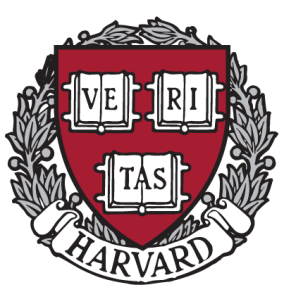

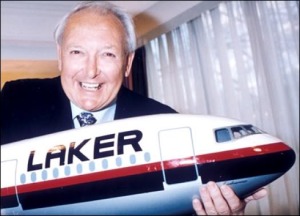
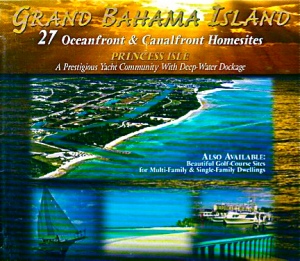
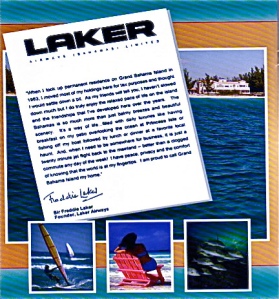
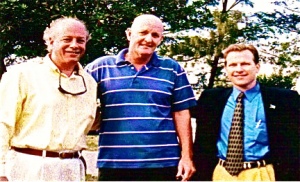




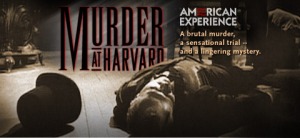
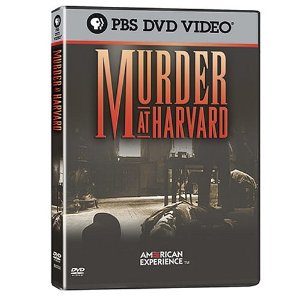



You must be logged in to post a comment.